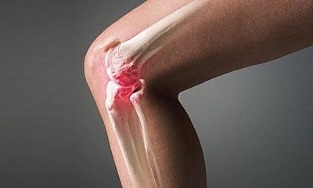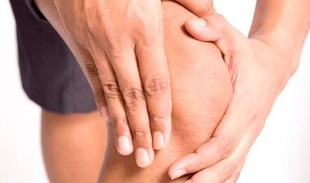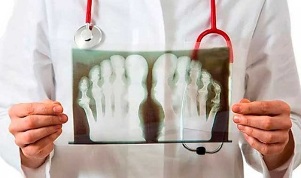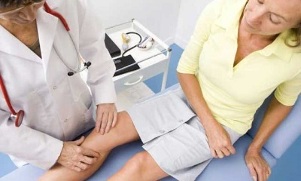The names of the diseases sound as if they affect the same organ system, namely the musculoskeletal system. What is the difference between arthritis and osteoarthritis and what are their similarities?
It is known for sure that the disease affects the musculoskeletal system, especially the joints, but the etiology of the diseases varies.
So, arthritis occurs due to infection: local or general, and osteoarthritis is degenerative processes that occur in articular cartilage due to the aging of the human body.Everyone, no matter how old, can develop arthritis and osteoarthritis.
Osteoarthritis can refer, among other things, to dystrophic processes, while arthritis can be side effects of other endogenous and exogenous diseases.
Among the first, osteoarthritis and arthrosis-deforming joints are distinguished, and arthritis is rheumatoid and rheumatic, specific infectious and post-traumatic joints. Arthritis can be associated with comorbidities of the blood, respiratory tract, digestive system, and others.
Basics
- Arthrosisis a chronically pathological degenerative-dystrophic pathology. The onset of the disease is not associated with an inflammatory component. The pathological process is based on the loss of the ability to regenerate and restore through the cells of the articular cartilage. Over time, painful abnormalities cover the nearby anatomical structures: ligaments, bursae, synovium, muscle and bone tissues. Middle and older people are most susceptible to osteoarthritis. According to the results of clinical studies, 30-40% of residents between the ages of 45 and 65 experience degenerative changes in the elements of the joints, and after 65 years the number of cases increases to 70-85%.
- Arthritisaffects younger population groups. Some types of diseases occur in every thousandth child. The general prevalence of arthritis is high in people of all ages. In contrast to osteoarthritis, the disease is inflammatory. Inflammation develops in the synovial membrane of the joint cavity. As the pathology develops, it spreads to the cartilage and ligamentous apparatus and turns into osteoarthritis.
It cannot be said which is worse: arthritis or osteoarthritis. Pathologies are interrelated. The elements of the joint, experiencing degenerative-dystrophic changes, respond to them with the development of the inflammatory process. The same situation can happen just the opposite. Locations with pathological abnormalities after arthritis are a favorable environment for osteoarthritis.
Mechanism of pathology formation

The difference between diseases is established from the beginning - the mechanisms of their emergence.
Play a fundamental role in the development of osteoarthritis:
- age-related changes;
- menopausal period;
- violation of metabolic processes;
- heavy physical activity;
- highly traumatic surgical interventions;
- overweight;
- frequent joint microtrauma;
- increased uric acid levels;
- insufficient blood supply;
- toxic poisoning of the body;
- Micronutrient deficiency.
The factors that cause the development of osteoarthritis are early pathologies: protrabulum of the acetabulum, osteochondropathy of the femoral head, endocrine diseases, hemophilia, diseases that provoke increased joint instability, weakness of the ligamentous apparatus. At a young age, degenerative changes develop against the background of congenital inferiority of the hip joint and traumatic lesions: subluxation and dislocation of the femoral head, fractures of the femoral neck and pelvis.
The starting point for the development of arthritis are:
- transmitted extra-articular infections;
- autoimmune reactions of the body;
- inherited the willingness of the gene that encodes information from the cell surface to deviate;
- the spread of the infectious agent via the lymphatic and blood pathways from the primary focus;
- inflammation of the connective tissue;
- diseases of the nervous system;
- hypothermia.
Infection of the synovial fluid occurs directly - open injuries that penetrate the joint. The mechanism of the onset of arthritis is endowed with a complex and diverse arsenal. The reason lies in the ability of the joints to react quickly to inflammation.
Difference in the accompanying symptoms

In arthritis, pain most often occurs with physical exertion, and pain can also appear at night when a person is in the same position for a long time.
With osteoarthritis, pain occurs locally in one place, namely where the inflammatory process takes place, but the pain disappears when the patient is at rest.
The type of pain is also different. For example, patients who develop arthritis experience acute, severe, and twitching pain, and dull and aching pain is associated with osteoarthritis.
The blood count is also excellent. In the first case, there is an increase in the erythrocyte sedimentation rate (ESR) and an increase in the content of C-reactive protein, as well as a high content of leukocytes and seromucoid. In the second case there are no such deviations.
Signs accompanying these diseases help understand the difference between osteoarthritis and arthritis.
With osteoarthritis, the knee and hip joints are mainly affected by abnormal deviations, sometimes the process is localized in the shoulder area. The pathology develops gradually. The first short-term pain does not make it possible to determine the exact location of the lesion.
Over time, the clinical picture is supplemented by the following signs:
- When moving, a kind of crispy sound appears.
- meteorological dependence is determined;
- the intensity of the pain syndrome increases against the background of increased stress, the pain passes at rest; The range of motion
- gradually decreases.
- there are thickenings along the edge of the joint space;
- with increasing volume, the processes squeeze the nerve endings and cause severe incessant pain;
- the joint is exposed to instability.
Every joint in the musculoskeletal system can be affected by pathological abnormalities in arthritis. Most vulnerable are small elements of the movable joints of the legs, hands, lower legs, and elbows. Rheumatoid arthritis is characterized by symmetry of focal lesions.
The first symptom, as with osteoarthritis, occurs unexpectedly. The Clinic for Pathology begins with a general malaise. Pathological abnormalities rapidly increase and affect the mobility and functionality of the affected joint. However, if osteoarthritis is characterized by worsening pain during movement, in arthritis the more you move, the less pain the pain will be. The intensity of painful sensations increases at night. In the morning, the patient has difficulty overcoming stiffness in the joints. Palpation determines pain over the entire surface of the joint.
The condition is deteriorating:
- local hyperemia;
- the formation of subcutaneous nodules;
- swollen lymph nodes;
- peripheral nerve damage.
The pathology in the active phase is accompanied by a pronounced general complex of symptoms: increased temperature indicators, chills, fever, intoxication syndrome. In the event of complications, other elements of the biological system are involved in the pathological state: the organs of vision, breathing, digestion, the cardiovascular, urinary and nervous systems.
In addition to the complete destruction of the cartilage, osteoarthritis leads to disorders of the biomechanics of the musculoskeletal system.
differential research methods
A detailed examination of the current clinical picture enables us to understand how arthritis can be distinguished from osteoarthritis with the greatest possible accuracy.
Different characteristics are identified based on the results of the following studies:
- Complete blood count.In osteoarthritis, in most cases the sedimentation rate and the reaction of the erythrocytes in the blood remain normal. Arthritis is characterized by a significant increase in indicators, which confirms the presence of an inflammatory process in the body. The analysis does not give a clear definition of the disease, but allows a distinction to be made between degenerative-dystrophic changes and inflammation.
- Biochemical analysis of the blood sample. In arthritis, the study confirms the presence of markers of inflammation in the biomaterial: C-reactive protein, seromucoid. It is possible to detect rheumatoid factor immunoglobulin antibodies that are incorrectly produced by the body. Biochemical parameters for osteoarthritis remain normal.
- X-ray examination.At the initial stage of the development of arthritis, no pronounced changes are noted. With osteoarthritis, an uneven narrowing of the joint space, the formation of osteophytes (growth on the surface of the bone tissue) is recorded.
- MRI.The most reliable differential diagnosis of arthritis and osteoarthritis in the early stages. The technique enables the detection of changes in the structural structure of the cartilage, the compaction of the synovial membrane, the joint effusion into the cavity, newly formed cysts and the self-growth of bone tissue.

Features of the therapy
Doctors of various qualifications are involved in the treatment of pathologies. In the case of osteoarthritis, the patient is referred to an orthopedic traumatologist. In arthritis, the first step is to determine the exact cause of the pathological changes. A specialist will be selected depending on the disclosed circumstances.
Since both diseases affect the condition of the supporting apparatus, their treatment methods are identical to one another. An important prerequisite for recovery is a decrease in total body weight and thus a decrease in the load on the organs affected by the disease. In both cases, joint replacement is used when medication and physical therapy courses do not bring positive results.
Specific therapy, remedial gymnastics, drug treatment and physiotherapy are also used. Endoprosthetics are used for the most serious complications.
In addition to identical methods, there are some differences in the treatment of pathologies.
For arthritis, treatment begins with immediate and intensive therapy. Anti-inflammatory and antibacterial drugs are prescribed. Drugs with the least pronounced side effects are preferred. If the result does not meet expectations, the drugs are replaced one by one.

The complex drug course includes:
- intra-articular antihistamine injections;
- corticosteroids;
- cytostatics;
- sulfonamides;
- Products based on gold salts.
The prognosis is generally good if arthritis is treated appropriately and in a timely manner.
Osteoarthritis requires long-term and thorough treatment. The main task of therapeutic measures in the treatment of osteoarthritis is the restoration of the cartilage tissue of the joint. Pharmaceutical products with this capability include chondroprotectors. Chondroitin and glucosamine are the most effective.
A disturbed blood microcirculation is eliminated with the help of vasodilators. To get rid of spastic pain, relax muscle tone, muscle relaxants are prescribed. The local application of warming ointments and creams is shown, which is strictly forbidden for arthritis.
In parallel, means are used that stimulate metabolic processes. The body is supplied with vitamins and microelements. Not the last place in osteoarthritis therapy is occupied by specially developed therapeutic exercises.
Osteoarthritis belongs to the group of chronic diseases that have irreversible consequences that cannot be completely eliminated. Therapeutic measures are intended to slow down degenerative processes as much as possible.
In both cases, people who observe the obvious signs of these diseases should immediately consult a specialist, and it is not worth treating these diseases alone. Take care of your health and get what you want.





































